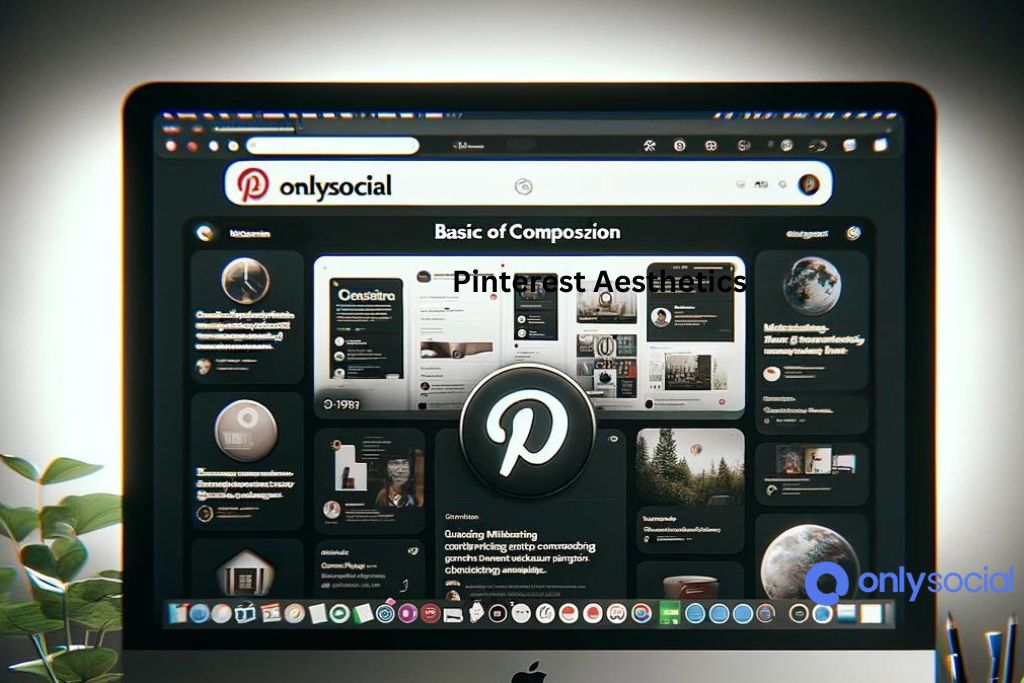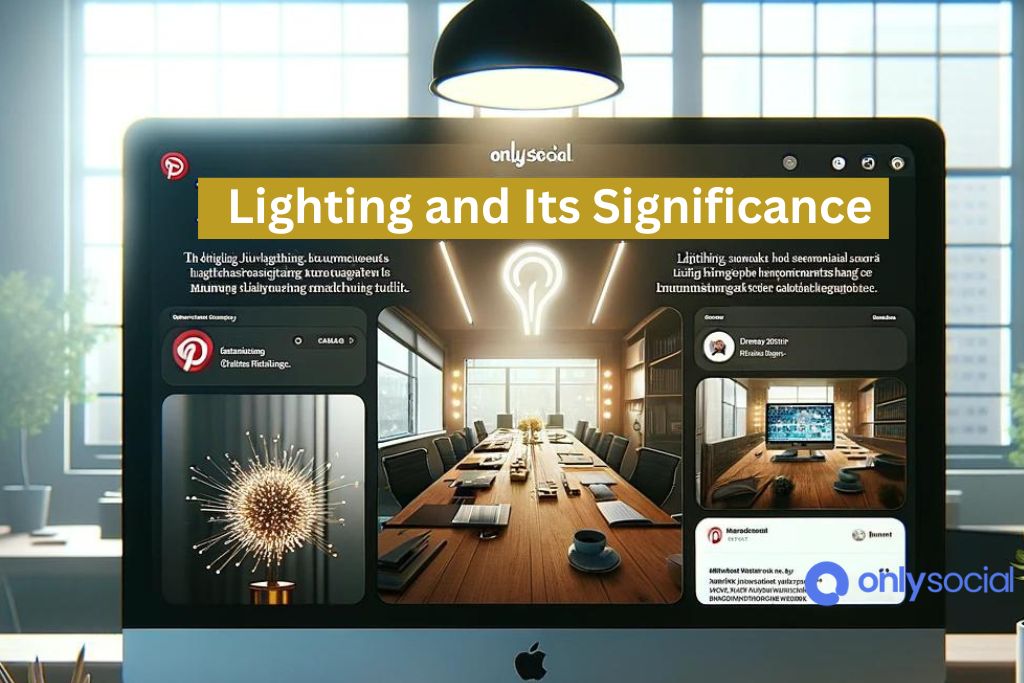In today’s digital age, where visuals play a crucial role in capturing attention and conveying messages, taking Pinterest-worthy photos with your phone has become an essential skill. Pinterest, a visual discovery engine for finding ideas like recipes, home and style inspiration, and more, thrives on captivating images that inspire users to explore, save, and create. With millions of users scrolling through their feeds daily, the quality and appeal of your photos can significantly impact your visibility and engagement on the platform.
This guide is designed to arm you with practical tips and techniques to elevate your mobile photography game, enabling you to capture stunning, Pinterest-worthy photos using just your phone. Whether you’re a blogger, a small business owner, or a passionate hobbyist looking to share your work with a broader audience, these tips will help you create eye-catching visuals that stand out in a sea of content. From understanding the aesthetics of Pinterest-friendly images to mastering the technical aspects of mobile photography, we’ll cover everything you need to know to transform your everyday shots into works of art. So, let’s dive in and unlock the full potential of your smartphone camera, making every photo you take Pinterest-worthy.
Table of Contents
- 1 Understanding Pinterest Aesthetics
- 2 Mastering the Basics of Composition
- 3 Lighting and Its Significance
- 4 Color Theory and Palette Selection
- 5 Enhancing Photos with Editing Apps
- 6 The Power of Storytelling Through Photos
- 7 Leveraging Portrait Mode for Depth
- 8 Maximizing the Use of Your Phone’s Features
- 9 Maintaining Consistency in Your Photos
- 10 Planning Your Shots
- 11 Continuous Learning and Experimentation
- 12 BONUS
- 13 Frequently Asked Questions
- 13.0.1 What Makes a Photo “Pinterest-Worthy”?
- 13.0.2 Can I Take Pinterest-Worthy Photos With Any Smartphone?
- 13.0.3 How Do I Edit My Photos for Pinterest Without Overdoing It?
- 13.0.4 What Are the Best Times to Take Photos With Natural Light for Pinterest?
- 13.0.5 How Important Is Consistency in My Pinterest Photo Style?
- 13.0.6 Are There Any Recommended Apps for Planning and Organizing Pinterest-Worthy Photos?
- 13.0.7 How Can I Protect My Pinterest Photos From Being Used Without Permission?
- 13.0.8 What Are Some Creative Challenges I Can Participate in to Improve My Pinterest Photo Skills?
Understanding Pinterest Aesthetics

Defining Pinterest-Worthy Photos
To begin with, understanding what makes a photo “Pinterest-worthy” is crucial. Pinterest is a visual discovery engine where aesthetics lead the user experience. A Pinterest-worthy photo captures attention not just through its subject matter but also through its composition, lighting, and overall feel. These photos typically have a high visual appeal and fit within specific thematic elements popular on the platform, such as DIY projects, fashion, home decor, and recipes.
Key Elements of Pinterest Aesthetic
- Clarity and Quality: High-resolution images with clear subjects and details are more likely to engage users. When taking Pinterest-worthy photos with your phone, focus on crisp, sharp images that stand out.
- Lighting: Natural light works best to achieve the bright and airy feel that many popular Pinterest photos have. Soft, diffused lighting can elevate a simple photo to Pinterest-worthy status.
- Color Scheme: Pinterest photos often follow a cohesive color scheme that resonates with the mood of the board or theme. Warm, pastel, or vibrant hues that pop can make your photos more appealing.
- Composition and Layout: The way elements are arranged in your photos can significantly impact their Pinterest appeal. Utilize the rule of thirds, balance, and symmetry to create visually pleasing compositions.
Trends and Themes on Pinterest
Staying updated with current trends and popular themes on Pinterest can guide you in creating content that resonates with users. Whether it’s the rustic chic look in home decor, minimalist designs, or bold and vibrant color palettes in fashion, aligning your photos with these trends can increase their visibility and engagement.
Tailoring Content for Your Audience
Understanding your target audience on Pinterest is key to taking photos that not only look great but also connect with your viewers. Tailor your content to reflect the interests, aspirations, and needs of your followers. This alignment between your content and your audience’s preferences is essential for creating Pinterest-worthy photos with your phone.
Mastering the Basics of Composition

When it comes to taking Pinterest-worthy photos with your phone, understanding and applying the basics of composition can significantly elevate the visual appeal of your images. Composition in photography refers to how elements are arranged within the frame, guiding the viewer’s eye to the subject or key parts of the image. Here are some fundamental composition techniques that can transform your mobile photos into captivating visuals for Pinterest.
Rule of Thirds: The Foundation of Dynamic Composition
- Definition and Application: The rule of thirds involves dividing your image using two horizontal and two vertical lines, creating nine equal parts. The most important elements of your photo should be placed along these lines or at their intersections. This technique adds balance and interest, making your photos more engaging.
- Pinterest Application: When taking photos for Pinterest, consider placing the main subject off-center according to the rule of thirds. This not only adds aesthetic appeal but also allows space for text overlays that are often used in Pinterest pins.
Perspectives and Angles: Adding Depth and Interest
- Exploring Different Angles: Instead of taking photos from eye level, experiment with various angles such as bird’s eye view, worm’s eye view, or shooting from the side. Changing the angle can dramatically alter the mood and perception of the image.
- Enhancing Pinterest Photos: Unique perspectives can make your photos stand out on Pinterest. For example, a bird’s eye view is perfect for showcasing layouts, outfits, or recipes, making the images more intriguing and pinnable.
Leading Lines and Framing: Guiding the Viewer’s Eye
- Utilizing Leading Lines: Lines within your photo, whether straight or curved, can guide the viewer’s eye toward the main subject. These can be natural lines like roads and rivers or man-made lines such as fences and architecture.
- Effective Framing: Use elements within your scene to frame the main subject. This could be a window, doorway, or branches of a tree. Framing adds depth to the photo and focuses the viewer’s attention on the key part of the image.
- Application in Pinterest: Photos with strong leading lines and framing stand out in the visually crowded space of Pinterest. They draw the viewer in, making them more likely to engage with the content.
The Importance of Negative Space
- Understanding Negative Space: Negative space refers to the area around and between the subjects of an image. It’s the empty space that helps define the subject, emphasizing it without clutter.
- Benefits for Pinterest Photos: Using negative space effectively can result in minimalist, clean images that are highly appreciated on Pinterest. Such images are not only visually appealing but also offer room for textual content, making them ideal for pins that aim to inform or inspire.
By mastering these basic principles of composition, you’re well on your way to taking Pinterest-worthy photos with your phone. Remember, the key to great photography lies in the ability to see ordinary surroundings from a new perspective and to creatively compose your shots. Experiment with these techniques, and don’t be
Lighting and Its Significance

Good lighting is the cornerstone of taking Pinterest-worthy photos with your phone. Understanding how to work with light, whether natural or artificial, can dramatically enhance the quality of your images, making them stand out on Pinterest boards. Here are detailed insights and tips on mastering lighting for your mobile photography.
Natural Light: The Best Friend of Phone Photography
- Golden Hour Magic: The golden hour, just after sunrise or before sunset, provides soft, diffused light that brings warmth and depth to your photos. This time is ideal for capturing landscapes, portraits, and still life images that resonate well on Pinterest.
- Cloudy Days Are Your Ally: Overcast conditions act as a natural diffuser, eliminating harsh shadows and evenly distributing light. Use these conditions to your advantage for shooting outdoor products or fashion shots that pop on viewers’ feeds.
- Direction and Quality of Light: Pay attention to the direction from which light is hitting your subject. Side lighting can emphasize textures, while backlighting can create a halo effect, adding an ethereal quality to your Pinterest pins.
Tackling Indoor Lighting Challenges
- Window Light for Soft Portraits: Position your subject near a window to use natural light for soft, flattering portraits or detailed close-ups of crafts and food. This technique ensures your subject is well-lit and can dramatically improve the aesthetic appeal of your photos.
- Reflectors and White Boards: Use simple reflectors, such as a piece of white cardboard, to bounce light onto the darker side of your subject, reducing shadows and evening out the light distribution. This trick is particularly useful for product photography, where details matter.
Artificial Light: Enhancing Photos After Sunset
- LED Lights and Softboxes: Invest in portable LED lights or a small softbox to use with your phone. These lighting tools can help you take Pinterest-worthy photos indoors, especially in low-light conditions, by providing a steady, adjustable light source.
- Creative with Household Items: Experiment with lamps, fairy lights, or even the flashlight from another phone to add interesting light effects, mood, and atmosphere to your photos. These techniques can add a unique charm to your Pinterest boards, making your content stand out.
Avoiding Common Lighting Mistakes
- Harsh Shadows and Overexposure: Avoid taking photos in direct sunlight during the middle of the day, which can cause harsh shadows and overexposure. If you must shoot in such conditions, use your phone’s HDR mode to balance the light and shadows.
- Using Flash Sparingly: The built-in flash on your phone can often create unflattering, harsh light. It’s generally best to use natural or external light sources for more balanced and attractive photos.
Understanding and manipulating light can transform your mobile photography, making each shot worthy of Pinterest admiration. By mastering these lighting techniques, you’re well on your way to creating visually stunning photos that capture the attention of Pinterest users around the globe.
Color Theory and Palette Selection
When it comes to taking Pinterest-worthy photos with your phone, understanding and applying color theory can dramatically enhance the visual appeal of your images. Colors not only affect the mood and atmosphere of your photographs but also play a crucial role in making them stand out on a platform as visually driven as Pinterest. Here’s how you can master color theory and palette selection to capture stunning, Pinterest-worthy images.
Understanding Color Theory
- Basics of Color Theory: Explore the color wheel concepts, including primary, secondary, and tertiary colors. Understanding these basics will help you in creating harmonious color combinations.
- Emotional Impact of Colors: Different colors evoke different emotions. For example, blue can convey calmness, while red might evoke passion or urgency. Tailor the color use in your photos to the mood you wish to convey, enhancing the storytelling aspect of your Pinterest content.
Choosing the Right Color Palette
- Identifying Complementary Colors: Complementary colors are opposite each other on the color wheel. Using these colors can create a vibrant look that stands out, perfect for catching the eye of Pinterest users scrolling through their feed.
- Analogous and Monochromatic Schemes: For a more harmonious and cohesive look, consider using analogous (colors next to each other on the color wheel) or monochromatic (shades of the same color) schemes. These are particularly effective for creating thematic Pinterest boards or series of posts.
Tools and Apps for Color Inspiration
- Utilizing Color Palette Tools: Many online tools and apps can help you develop or find inspiration for your photo’s color palette. Apps like Adobe Color or Coolors allow you to generate palettes that you can aim to replicate in your photography.
- Finding Inspiration in Everyday Life: Sometimes, the best color inspiration comes from your surroundings. Nature, architecture, and even your wardrobe can provide unique and appealing color combinations that can be translated into your photography.
Implementing Color Theory in Your Photos
- Planning Your Shoot Around Your Palette: Once you’ve chosen a palette, consider how your subject, background, and props can incorporate these colors. Planning ahead can make a significant difference in achieving a cohesive and appealing look.
- Editing for Color Accuracy and Impact: After taking your photos, use editing apps to adjust the colors to match your intended palette more closely. This may involve tweaking saturation, brightness, or applying filters that emphasize your chosen colors.
Enhancing Photos with Editing Apps
In the journey of taking Pinterest-worthy photos with your phone, editing plays a pivotal role. It’s the magic touch that can transform a good photo into a great one, ensuring it stands out on Pinterest boards. This section delves into the essential editing apps and provides tips to enhance your mobile photography for Pinterest.
Selecting the Right Editing Apps
- VSCO: Renowned for its stunning filters and advanced editing tools, VSCO is a favorite among Pinterest users seeking a cohesive aesthetic for their boards.
- Snapseed: Offers a wide range of editing features from basic adjustments to advanced edits like selective adjustments and healing tools.
- Lightroom Mobile: Ideal for more experienced photographers, this app provides extensive control over color balance, curves, and selective edits, enabling users to achieve professional-level photo enhancement.
- Canva: Beyond traditional photo editing, Canva is perfect for adding text overlays, frames, and other graphic elements that can make images more engaging for Pinterest audiences.
Basic Editing Tips
- Brightness and Contrast Adjustments: The first step to making your photos pop. Adjusting the brightness can help illuminate your subject, while tweaking the contrast will enhance the photo’s textures and depth.
- Saturation Adjustments: Boosting the saturation slightly can make the colors in your photo more vibrant, capturing the eye of Pinterest users. However, it’s crucial to maintain natural skin tones and avoid over-saturation.
Advanced Edits for Pinterest-Worthy Photos
- Filters and Overlays: Applying filters can instantly change the mood of your photo. Select filters that complement your Pinterest board’s theme. Overlays, such as light leaks or textures, add a creative flair and can set your photos apart.
- Adding Text: When your photo is meant to communicate a message or title, incorporating text can be highly effective. Use Canva or Adobe Spark to choose fonts that align with your photo’s aesthetic and the overall vibe of your Pinterest account.
- Cropping for Impact: Pinterest favors vertical images due to their layout. Cropping your photos to a vertical orientation can ensure they take up more screen space, increasing engagement.
Utilizing Apps for Color Palette Inspiration
- Adobe Color Capture: This app allows you to create color palettes from your photos, ensuring consistency across your Pinterest board.
- Coolors: Generate color schemes to plan your photo shoots or edits, aligning your content with trending Pinterest aesthetics.
The Power of Storytelling Through Photos
In the quest for taking Pinterest-worthy photos with your phone, mastering the technical aspects—such as lighting, composition, and editing—is only part of the equation. Equally important is your ability to convey stories through your images. Storytelling not only breathes life into your photos but also resonates with viewers on a deeper level, compelling them to engage, share, and remember your work. Here’s how you can harness the power of storytelling to enhance your mobile photography for Pinterest.
Understand the Story You Want to Tell
Before you even take your phone out to snap a photo, ask yourself: What story do I want to tell? It could be the tranquility of a morning coffee, the chaos and beauty of urban life, or the untouched wilderness of a hiking trail. Your subject doesn’t have to be extraordinary, but your perspective on it should be. Identify the emotion or message you wish to convey, and use that as your guiding light.
Use Composition to Your Advantage
Composition can dramatically affect how your story is told and perceived. Use leading lines to guide the viewer’s eye to the focal point of your story, or frame your subject in a way that emphasizes the narrative you’re aiming to convey. For example, a lone figure standing at the end of a long, winding road can evoke feelings of journey and solitude. Remember, every element in your frame should contribute to the story you’re telling.
Incorporate Elements that Add Depth
Props, settings, and even the time of day can add layers of depth and context to your story. A well-placed book in a cozy corner can speak volumes about leisure and relaxation, while shadows cast at sunset can introduce a mood of introspection and closing. Think of these elements as supporting characters that enrich the narrative of your main subject.
Capturing Emotion
Emotion is the universal language of storytelling. Capturing genuine expressions, candid moments, or even the subtle interplay of light and shadow can evoke emotions that connect on a human level. Aim to capture photos that make your audience feel something—joy, nostalgia, curiosity, or awe. These are the images that tend to perform exceptionally well on Pinterest.
Sequencing for Impact
While a single photo can tell a powerful story, a series of images can provide a more comprehensive narrative. Consider creating a Pinterest board dedicated to a particular story or theme. This allows you to develop a narrative through multiple photos, each offering a different chapter or perspective on the overall theme.
Infuse Your Unique Perspective
Lastly, remember that the most captivating stories are those told from a unique point of view. Don’t shy away from infusing your personality, experiences, and insights into your photography. Your unique perspective is what will make your photos stand out amidst the sea of images on Pinterest.
By focusing on storytelling, you elevate your mobile photography from simply taking pictures to creating art. Photos that tell a story not only capture the eye but also the imagination, making them truly Pinterest-worthy.
Leveraging Portrait Mode for Depth
Understanding Portrait Mode
Portrait mode is a feature available on most modern smartphones that simulates a shallow depth of field. This effect focuses on the subject while blurring the background, making it a powerful tool for taking Pinterest-worthy photos with your phone. By effectively using portrait mode, you can create professional-looking images that stand out on your Pinterest board.
Tips for Maximizing Portrait Mode
- Choosing the Right Subject: Portrait mode works best when there’s a clear distinction between your subject and the background. Choose subjects that will benefit from the focus, such as individuals, pets, plants, or even inanimate objects that you want to highlight.
- Distance Matters: For optimal results, maintain an appropriate distance between your camera and the subject. Typically, standing two to eight feet away allows the camera to better distinguish the subject from the background, enhancing the depth effect.
- Lighting is Key: Good lighting is crucial when taking Pinterest-worthy photos, especially in portrait mode. Natural light can help avoid the noise and blur that often occur in low-light conditions. Try to position your subject where the light is soft and evenly distributed.
- Background Considerations: While portrait mode blurs the background, the choice of background can still significantly impact the overall aesthetics of your photo. Look for backgrounds with colors or textures that complement your subject without overpowering it. A less cluttered background typically results in a more effective blur, making your subject stand out more.
- Adjusting Depth After Shooting: Many smartphones allow you to adjust the depth of field after taking the photo. Use this feature to fine-tune the level of background blur, ensuring that the focus is squarely on the subject. This adjustment can help you achieve the perfect balance for Pinterest-worthy photos.
- Experiment with Different Angles: Don’t hesitate to take the same shot from multiple angles. Sometimes, a slight change in perspective can significantly enhance the depth effect, adding an intriguing element to your photos that captures the viewer’s attention on Pinterest.
- Editing for Perfection: After capturing your photo in portrait mode, use editing tools to make minor adjustments to brightness, contrast, and saturation to ensure your subject shines. Editing can also enhance the background blur, making your photo even more suitable for Pinterest.
Embracing Creativity with Portrait Mode
Portrait mode is not just for portraits. Experiment with different subjects, from close-up shots of everyday items to capturing moments in nature, to add variety to your Pinterest content. The key to taking Pinterest-worthy photos is to keep experimenting and adjusting until you find the perfect balance that highlights your subject and tells a story that resonates with your audience.
Maximizing the Use of Your Phone’s Features
In the journey of taking Pinterest-worthy photos with your smartphone, mastering the art of utilizing your device’s built-in features is a game-changer. Smartphones today come equipped with a plethora of camera functionalities that, when used to their full potential, can significantly elevate the quality and creativity of your photos. This section will guide you through various phone features and how to use them effectively to capture stunning, Pinterest-worthy images.
Understanding Your Phone’s Camera Settings
Before diving into advanced techniques, familiarize yourself with the basic settings of your phone’s camera. Explore the options available for adjusting the exposure, focus, and ISO. Understanding these settings can help you take control of the photo-taking process, ensuring your images are well-lit and sharp.
Utilizing HDR Mode
High Dynamic Range (HDR) mode is a powerful tool for taking Pinterest-worthy photos, especially in challenging lighting conditions. HDR works by taking multiple shots at different exposures and blending them into one photo. This feature is particularly useful for scenes with high contrast, as it balances the shadows and highlights, ensuring that no part of your photo is too dark or overexposed.
Making the Most of Portrait Mode
Portrait mode has revolutionized smartphone photography by allowing users to take photos with a beautifully blurred background, similar to the depth of field effect produced by professional cameras. Use portrait mode to focus on your subject, making it stand out against a soft, pleasing background. This feature is perfect for product shots, fashion photography, or any image where the subject is the focal point.
Experimenting with Panorama for Wide Shots
For capturing expansive landscapes or large groups, the panorama mode can be incredibly useful. By stitching together a series of photos taken as you move the camera across the scene, panorama mode creates a wide, seamless image. This feature is excellent for creating breathtaking, Pinterest-worthy landscape shots or capturing the full ambiance of interior spaces.
Creative Use of Burst Mode
Burst mode is invaluable for capturing moments in action or when trying to get the perfect timing for a shot. By holding down the shutter button, your phone will take a rapid series of photos, allowing you to choose the best one from the sequence. This feature is ideal for lifestyle shots, dynamic scenes, or capturing expressions and movements that happen in the blink of an eye.
Leveraging Time-Lapse and Slow Motion
Time-lapse and slow motion are creative features that offer unique ways to capture and present your subjects. Time-lapse is perfect for showing the progression of time, such as a sunset, a blooming flower, or the hustle and bustle of a busy location. Slow motion, on the other hand, allows you to capture detailed actions and movements, adding a dramatic effect to your videos that can be transformed into captivating, share-worthy photos for Pinterest.
Exploring Third-Party Camera Apps
While your phone’s default camera app comes with many features, third-party camera apps can offer additional controls and creative options. Apps like ProCamera, VSCO, and Lightroom Mobile provide advanced settings for exposure, focus, and more, along with powerful editing tools to fine-tune your photos for Pinterest.
Maintaining Consistency in Your Photos
When aiming to take Pinterest-worthy photos with your phone, one of the key elements that often gets overlooked is the importance of consistency. Maintaining a consistent look and feel across your images can significantly impact how your audience perceives your Pinterest board. This consistency not only helps in establishing your unique brand identity but also makes your content more recognizable and visually appealing to your followers. Here’s how you can achieve this consistency:
Defining Your Visual Style
- Start by defining your visual style. Consider the mood, color schemes, and themes you want to portray in your photos. Whether it’s bright and airy, dark and moody, or colorful and vibrant, your chosen style should reflect the type of content you wish to share on Pinterest.
Using a Consistent Color Palette
- Color plays a pivotal role in creating visually cohesive content. Choose a color palette that resonates with your brand or personal style and stick to it. This doesn’t mean all your photos must feature the same colors, but there should be a harmonious blend of colors throughout your Pinterest board to achieve a consistent look.
Applying the Same Editing Process
- The way you edit your photos can significantly contribute to maintaining consistency. Using the same filter or the same set of adjustments (such as brightness, contrast, and saturation levels) on all your photos can help in achieving a uniform look. Consider creating your own preset in your favorite photo editing app to streamline this process.
Consistent Composition Techniques
- While it’s important to experiment with different angles and perspectives, having a few go-to composition techniques can aid in maintaining a consistent style. Whether it’s the rule of thirds, leading lines, or symmetry, applying these techniques regularly can make your Pinterest board more cohesive.
Thematic Consistency
- For content creators focusing on specific niches, thematic consistency is crucial. Ensure that the subjects of your photos align with your theme or niche. This helps in attracting and retaining an audience that is genuinely interested in your content, making your photos more effective and engaging for Pinterest.
Regular Content Updates
- Consistency isn’t just about the look and feel of your photos but also how regularly you update your Pinterest board. Establish a posting schedule and stick to it. Regular updates keep your audience engaged and make your Pinterest board more likely to be discovered by new viewers.
Reviewing and Curating Your Board
- Regularly review your Pinterest board to ensure that all content aligns with your defined visual style. Don’t hesitate to remove or replace photos that don’t fit the overall aesthetic. Curating your board is an ongoing process that plays a key role in maintaining consistency.
Planning Your Shots
When it comes to taking Pinterest-worthy photos with your phone, planning your shots can significantly impact the quality and appeal of your images. This step is crucial in the creative process, helping you to visualize the end result and execute your ideas with precision. Here’s how to effectively plan your shots to ensure they stand out on Pinterest.
Understand Your Objective
- Define the Purpose: What do you want your photo to convey? Whether it’s showcasing a product, capturing a mood, or telling a story, understanding your objective is the first step in planning.
- Target Audience: Consider the preferences and interests of your Pinterest audience. Tailoring your photos to your audience can increase engagement and relevance.
Create a Mood Board
- Inspiration Gathering: Use Pinterest itself or other platforms to collect images that inspire you. Pay attention to themes, colors, and compositions that resonate with your objective.
- Mood Board Tools: Utilize tools like Pinterest boards, Canva, or even a physical board to compile your inspirations. This visual reference will guide your shooting process.
Select a Theme and Style
- Consistency is Key: For taking Pinterest-worthy photos, maintaining a consistent theme or style helps in building a cohesive look for your Pinterest board.
- Style Consideration: Whether it’s minimalistic, rustic, vibrant, or any other style, choose one that best represents your message and sticks with it throughout your planning and shooting process.
Scout for Locations
- Location Scouting: The right backdrop can elevate your photo significantly. Look for locations that complement your theme and add depth to your photos.
- Natural Light Availability: Consider the lighting conditions of potential locations. Natural light can dramatically improve the quality of phone photography.
Plan Your Composition
- Framing Your Subject: Before the shoot, think about how you want to frame your subject. Experiment with different compositions during the planning phase to find the most striking arrangement.
- Elements of Interest: Include elements that add interest or lead the viewer’s eye towards the main subject of the photo.
Prepare Props and Outfits
- Props That Tell a Story: Select props that enhance the story or theme of your photo without overshadowing the main subject.
- Coordinating Outfits: If your photo includes people, coordinating outfits that match the color scheme and style of the shoot can add a professional touch.
Timing and Weather Considerations
- Golden Hour Magic: Planning your shoot during the golden hour (shortly after sunrise or before sunset) can provide soft, warm lighting.
- Weather Check: For outdoor shoots, check the weather forecast to avoid any surprises.
Practice and Experiment
- Pre-Shoot Trial: If possible, visit the location beforehand and take test shots with your phone. This practice allows you to adjust your plan based on real conditions.
- Flexibility: Be prepared to adapt your plan based on unexpected opportunities or challenges that arise during the shoot.
Continuous Learning and Experimentation
In the realm of photography, and particularly when it comes to taking Pinterest-worthy photos with your phone, the journey doesn’t end with mastering the basics or even becoming proficient in advanced techniques. The landscape of photography, along with Pinterest trends, evolves constantly. To keep your content fresh and engaging, it’s essential to adopt a mindset of continuous learning and experimentation. Here’s how you can keep growing and refining your skills in taking Pinterest-worthy photos:
Embrace Experimentation
- Try New Subjects: Regularly challenge yourself by photographing a variety of subjects, including those you’re less familiar with. This could range from still-life compositions to dynamic street photography. Each subject offers unique challenges and learning opportunities.
- Experiment with Different Styles: If you typically lean towards a certain aesthetic, such as minimalist shots, consider experimenting with more vibrant, cluttered, or even abstract compositions. Discovering what works in these styles can add versatility to your photography.
- Play with Light and Shadow: Explore various lighting conditions to see how they affect your photos. Shooting at different times of the day, using artificial lights, or experimenting with shadows can dramatically change the mood of your images.
Leverage Social Learning
- Follow Inspirational Accounts: Pinterest and other social media platforms are treasure troves of inspiration. Follow accounts that inspire you and try to understand the techniques they use in their photography. Don’t hesitate to reach out to them with questions or for advice.
- Join Photography Communities: Online communities and forums can be invaluable resources. They’re places where you can ask for feedback, share your own tips, and stay updated on the latest photography trends and equipment.
Stay Informed on Trends and Techniques
- Keep Up with Pinterest Trends: What’s popular on Pinterest can change quickly. Regularly browse through the platform to see what types of photos are trending. This can give you insights into what the Pinterest audience is currently interested in.
- Learn About New Techniques and Tools: The world of smartphone photography evolves rapidly, with new apps, accessories, and phone features being released regularly. Stay informed about these developments and how they can enhance your photography.
Practice Mindfully
- Set Personal Projects or Challenges: Give yourself assignments based on specific themes, techniques, or limitations. This can be a powerful way to focus your learning and creativity. For example, you might challenge yourself to take 30 Pinterest-worthy photos in 30 days, each focusing on a different composition technique.
- Reflect on Your Progress: Regularly review your past work to see how your skills have evolved. Identify areas for improvement and set goals for your future photography projects.
Taking Pinterest-worthy photos is a skill that benefits greatly from continuous learning and experimentation. By embracing new challenges, staying engaged with the photography community, and keeping an eye on evolving trends and techniques, you can continue to capture stunning images that stand out on Pinterest. Remember, the most important part of this journey is to enjoy the process of creating and sharing your vision with the world.
BONUS
Looking to snap some Pinterest-worthy photos with just your phone? We’ve got you covered with these 11 tips that will have your feed looking like a digital wonderland in no time. From mastering lighting to nailing composition, we’ve got all the insider secrets to elevate your smartphone photography game. Get ready to impress your followers with stunning visuals that are sure to make them hit that save button!
Ready to take your social media game to the next level? With OnlySocial’s Post Planning and Scheduling function, you can streamline your posting process across all your favorite platforms. Say goodbye to the hassle of manual posting and hello to effortless scheduling. Plus, with unlimited posting and the ability to manage unlimited social profiles, there’s no limit to your creativity. Sign up for our commitment-free 7-day trial today.
Frequently Asked Questions
What Makes a Photo “Pinterest-Worthy”?
Taking Pinterest-worthy photos means capturing images that are not only visually appealing but also resonate with your target audience. These photos often feature compelling compositions, balanced use of color, and convey a clear theme or story that aligns with the interests of Pinterest users.
Can I Take Pinterest-Worthy Photos With Any Smartphone?
Yes, you can take Pinterest-worthy photos with any smartphone, as long as you understand the basics of composition, lighting, and editing. Modern smartphones are equipped with advanced camera features that can produce high-quality images suitable for Pinterest.
How Do I Edit My Photos for Pinterest Without Overdoing It?
When editing photos for Pinterest, aim for a natural look by adjusting the brightness, contrast, and saturation levels minimally. Use filters sparingly and choose ones that enhance the mood without distorting the photo’s authenticity. Apps like VSCO, Lightroom Mobile, and Snapseed offer great control for subtle editing.
What Are the Best Times to Take Photos With Natural Light for Pinterest?
The golden hour, which occurs just after sunrise or before sunset, offers soft, diffused light ideal for taking Pinterest-worthy photos. However, overcast days can also provide excellent lighting conditions by evenly distributing light and reducing harsh shadows.
How Important Is Consistency in My Pinterest Photo Style?
Consistency is crucial for building a recognizable brand and aesthetic on Pinterest. It helps in creating a cohesive look across your boards, making your content more attractive to followers and potential pinners. Stick to a consistent color scheme, editing style, and theme to enhance your Pinterest presence.
Are There Any Recommended Apps for Planning and Organizing Pinterest-Worthy Photos?
Apps like Planoly, Trello, and Canva are excellent for planning and organizing your Pinterest content. They can help you visualize how your photos will look on your board, schedule posts, and create engaging graphics and captions.
How Can I Protect My Pinterest Photos From Being Used Without Permission?
To protect your photos, consider watermarking them or uploading them in lower resolutions. Additionally, use the copyright feature on Pinterest to report unauthorized use of your images. Educating your audience about the importance of crediting the original source can also help.
What Are Some Creative Challenges I Can Participate in to Improve My Pinterest Photo Skills?
Joining photography challenges on social media platforms, including Instagram and Pinterest itself, can inspire creativity and improve your skills. Look for hashtags related to photo challenges or join photography groups online where weekly or monthly challenges are posted.
By addressing these questions, you’ll help your readers navigate the nuances of taking and sharing Pinterest-worthy photos, encouraging them to explore their creativity and improve their photography skills with their phones.




